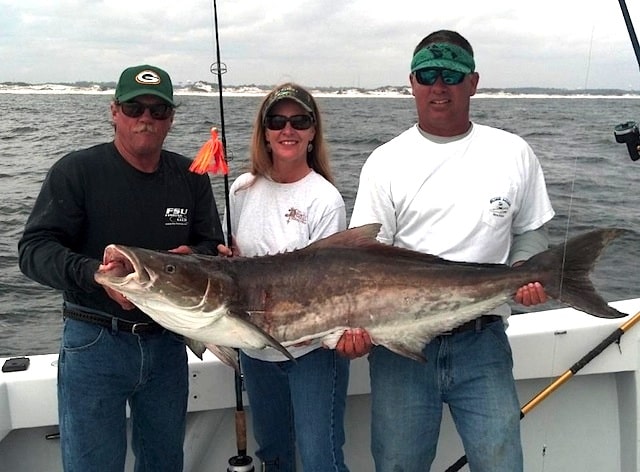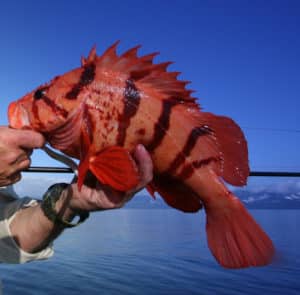
Cobia Dineen2
One of Florida’s most popular fisheries just happens to occur in one of the Sunshine State’s most beautiful regions — and that makes the springtime cobia run in the Florida Panhandle a must-experience for serious anglers and visiting tourists alike.
This is sight-fishing at its finest to migrating pods of some of the largest cobia anywhere in the state — or anywhere in the world, for that matter. “We’ve caught them in these waters up to 137 pounds,” says Capt. Don Dineen, a veteran skipper who pursues these hard-pulling bruisers out of Destin, as does his brother Capt. Pat Dineen.
The Dineen brothers know their stuff. In fact, Don won both the overall and women’s division of the Harbor Docks World Cobia Championship last year, a prestigious, month-long tournament in the area. As fate would have it, I caught up with him on the phone recently as he was on the water looking for cobes aboard his 40-foot Infinity, Sure Lure — and his charter had just caught a dandy 76-pounder (pictured above)!
Here’s the lowdown on this unique fishery:
Peak Season: March 15 through April 15 is generally prime time for cobia, though it varies from year to year. The fish migrate northward from southern Gulf waters then turn west as they reach the Panhandle shallows, trekking toward the mouth of the Mississippi River and the Chandeleur Islands. While early runs of cobia generally produce smaller quantities of fish, the biggest fish of the season are generally caught during this time. As the season progresses, quantities increase, but the average size goes down to the 30- to 45-pound range.
Where to Look: These fish are typically caught near the water’s surface anywhere from a half-mile to three miles off the beach, pushing west. A good pod of fish contains about five to eight cobia, though Dineen has seen schools up to 50 fish on the rare occasion. In late April and early May, the cobia generally slow in their migration and will often hang around wrecks in 80- to 100-foot depths for a couple days at a time before moving on.
Angling Tactics & Presentation: This is a sight-fishing game. “We stand in the towers, locked and loaded!” says Capt. Don. Indeed, towers are a huge benefit for fishermen here, as they offer a higher vantage point for spotting the fish, which can be clearly seen in the green waters. The cobia often dive down deep from time to time, so anglers have to be on the lookout for fish at all times. Plentiful sunshine helps to see the fish and a southeast wind and easterly current is most favorable to anglers, as it keeps the cobia on the surface. When fish are spotted, a stealthy approach and accurate cast with live bait or a jig will usually result in a take.
Tackle: Spinning gear in the 30-pound class is ideal for these big bruisers — it’s easy to cast and offers adequate strength should a large fish eat. Capt. Don likes to use a two-foot mono leader in the 60- to 80-pound range, though if lots of boats are on the cobia and they’re finicky, he’ll back down to 30-pound.
Lures & Bait: Live bait is tough to beat and Capt. Don likes to rig live eels, mullet, squid, pinfish, pigfish, grunts or even live catfish on a 9/0 Owner circle hook. “We like to have a variety of baits for them,” he says, noting that multiple offerings is often a key to success. Big jigs in the 2- to 3-ounce range also account for plenty of cobia, with the famed Ding-a-Ling jig still a local favorite.
Regulations: Cobia are one of the best eating fish in the Gulf, and anglers are allowed to keep one per day or six per vessel, whichever is less; 33-inch minimum fork length.
Capt. Don Dineen
Destin, Florida
850-376-8399
fish@surelurecharters.com
surelurecharters.com
Capt. Pat Dineen
Shalimar, Florida
850-376-0400
flyliner@cox.net
flyliner.com
For more information on fishing Florida, go to Visit Florida.








